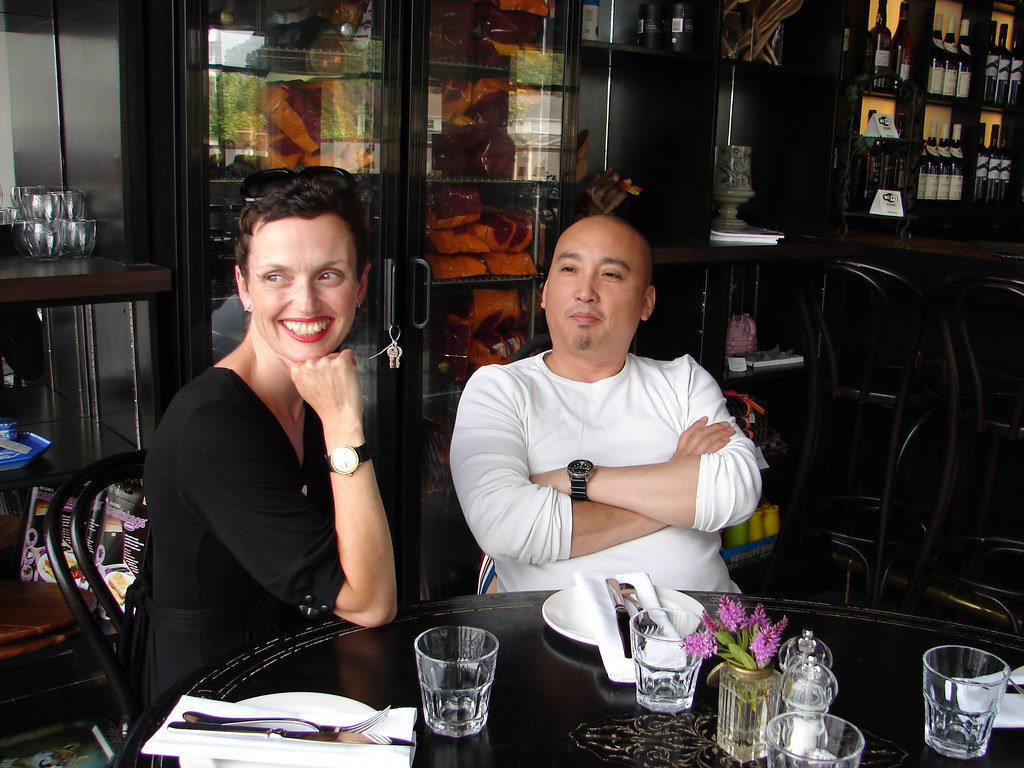The Irish Food Writers Guild, which I’m proud to be a member of, meet occasionally to do reconnaissance trips around the country. We visit artisan producers to see their process and hear their stories. Our most recent summer outing was to the Boyne Valley... and wow, what an action packed day we had!
First stop, Drummond House, where Marita and Peter Collier welcomed us warmly onto their farm outside Drogheda, they grow 5 varieties of garlic and several acres of green asparagus on their rich sandy soil.

This enterprise, like Ballymakenny Farm in Baltray, was born out of desperation to find a different way to earn a living on the land and the family farms they all love. Marita and Peter told us the story of the roller coaster, voyage of trial and error they embarked on to source varieties of garlic to suit their land and the Irish climate. Six years later, through sheer hard work and help from Marita’s friends at the Termonfeckin National School gate, who initially volunteered to help with packing the garlic in their spare time. They now have a thriving business and have introduced the Irish market to a wide variety of garlic types and garlic scapes (tender shoots) which I’ve hitherto only seen in my own garden or in the Union Square Market in Manhattan.
Marita and Peter, like Maria and David Flynn of Ballymakenny Farm had high praise for the chefs who encouraged and supported them initially and continue to do so. Drummond House garlic is now widely available around the country.

Ballymakenny Farm also needed to add value to their produce, so Maria who has a business background decided to trial some unusual potato varieties, much to the amusement and scepticism of their neighbours and friends. They now grow six heirloom varieties, Violetta, Red Emmalie, Mayan Rose, Mayan Twilight, Mayan Gold and waxy Pink Fir Apple plus beautiful crops of long stem broccoli. The chefs go crazy for the deep purple Violetta, the mottled pink varieties and the fingerling potatoes, Ballymakenny can scarcely keep up with the demand. It was a extra special treat to meet David’s parents who were commercial potato growers in the past...

Our next stop was Listoke Gin Distillery and School. Bronagh Conlan gave us a spirited talk on gin production and the wide range of botanicals that can be added to the raw spirit to give it a unique flavour. Visitors can make their own unique blend at the gin school in the individual copper stills around the edge of the room. At the end of their visit, they take home their very own bespoke bottle of gin, a unique and hugely sought after visitor experience for corporate events too. Loved the psychedelic owl street art which has become the Listoke Distillery logo created by Dean Kane of visual waste.

Just a few miles to Tankardstown House where the young Romanian head chef Janos Sarkosi cooked us a seven course feast to showcase his considerable skills... Such a lovely place, no wonder it is also a favourite venue for weddings...

No time to dawdle, still lots more to see... Next stop, The Cider Mill at Stackallan, near Slane in Co. Meath.

I’ve been a fan of Mark Jenkinson for several years now; he is a complete purist, grows a variety of cider apples in his own orchards, gently presses them in small batches in the time honored, traditional way between timber slabs. He makes five different styles of cider including his famous Cockagee, named after an ancient cider apple variety that was thought to be extinct for over 125 years. . . Mark managed to trace it to an old orchard in Gloucestershire and has now recovered and saved it for posterity. Cider is the wine of our land and there has been a rich tradition of cider making in the Boyne Valley for hundreds of years.

Mark is the only Irish cider producer to make keeved cider, a slow natural, painstaking process which results in a superb cider. His tasting room which also houses his eclectic collection of vernacular chairs, hardening stands and artefacts is worth the trip alone.

Carina Mount Charles brought along her organic eggs and salad leaves and nearby farmhouse cheese maker Michael Finnegan from Mullagh Farm delivered over his Boyne Valley Bán and Blue goat cheeses for us to taste...a new find for me.

And there was still more! A whistle-stop tour of Slane Castle Distillery where Henry Mount Charles and his son Alex have converted the stable yard into a highly impressive distillery in partnerships with Brown Forman (makers of Jack Daniels).

After an excellent tour and tasting we sped down the road to Boann Distillery where Peter Cooney had cans of several versions of gin in a tin for us to taste. This super exciting innovative company in the heart of the Boyne Valley brews beer, non-alcoholic drinks, whiskey and cider from apples grown in their own orchards in Tara. The Boann Distillery, named for Boann the Irish Godess of the Boyne, is housed in an amazing building repurposed from a car showroom. Book a tour and tasting if you are in the area.

Finally we had supper at the Eastern Seaboard Bar and Grill, Jeni and Reuvans Diaz’s award winning restaurant in Bryanstown. Seek out this place in the suburbs of Drogheda, its super innovative food is made with many of the superb local ingredients.
Who knew the magic that awaits in an area that has been hitherto been regarded as a mere corridor between Dublin and Belfast? It was an eye opener to discover so many artisan food and drink producers flourishing in this historic area... Well, take my advice and take time out to explore this intriguing part of Ireland’s Ancient East....










